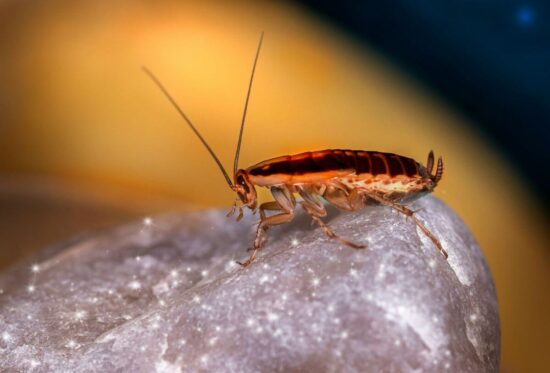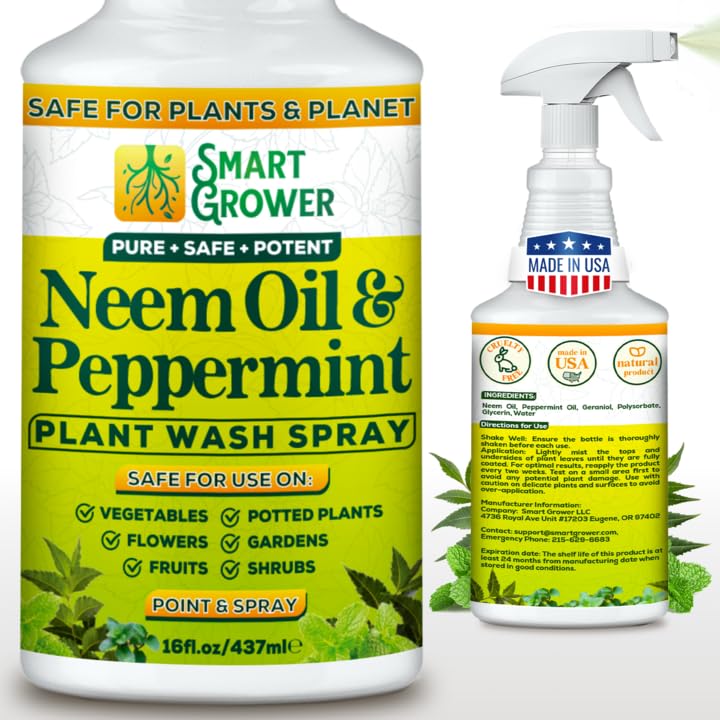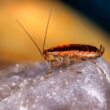Nobody wants to share their home with cockroaches. These creepy crawlers can spread germs, trigger allergies, and make your kitchen feel gross. While store-bought sprays work, many people want to try natural methods first.
Home remedies for roaches can be safer for families and pets. They use common household items that most people already have. Plus, they cost way less than calling an exterminator.
Keep in mind that home remedies for cockroaches work best for small problems. If you see roaches during the day or find lots of them, you might need professional help. But for minor issues, these natural methods can really help control the problem.
Let’s look at some proven ways to fight roaches using items you have around the house.
1. Boric Acid and Sugar Bait
This home remedy for roaches uses science to beat the bugs. Boric acid messes up a cockroach’s stomach and makes them lose water. The sugar tricks them into eating the poison.
What you need:
- Equal parts boric acid powder and powdered sugar
- Small spoon for mixing
How to use it: Mix the boric acid and sugar together. Sprinkle thin lines in cracks, behind appliances, and along baseboards where roaches walk. Don’t make thick piles because roaches will avoid them.
Safety first: Boric acid can hurt kids and pets if they eat it. Keep this mixture away from them. Wash your hands after handling it.
Why it works: Roaches take the bait back to their hiding spots. When other roaches eat it or clean themselves, they get poisoned too. This can kill whole groups of roaches.
2. Essential Oil Sprays
- Plant-based peppermint oil formula repels pests naturally
- Safe to use around pets, kids, and indoor living spaces
- Great for garages, attics, baseboards, and outdoor areas
- Fresh mint scent with long-lasting protection
Essential oils smell great to people but roaches hate them. This home remedy for cockroaches repels bugs while making your house smell fresh.
Best oils to use:
- Peppermint oil (roaches really hate this one)
- Eucalyptus oil
- Tea tree oil
- Rosemary oil
How to make the spray: Add 10 to 20 drops of essential oil to one cup of water in a spray bottle. Shake well before each use.
Where to spray:
- Around doors and windows
- In cracks and corners
- Behind appliances
- Under sinks
Spray these areas every few days. The smell fades quickly, so you need to reapply often.
Pet warning: Some essential oils can hurt cats and dogs. Check with your vet before using them if you have pets.
3. Diatomaceous Earth Food Grade
- Kills fleas, ants, roaches, and more
- Includes powder duster for easy, targeted application
- Works indoors and outdoors, long-lasting when dry
- 100% pure, food-grade, safe around pets and kids
Diatomaceous earth sounds fancy, but it’s just ground up tiny sea shells. The sharp pieces are too small for people to feel, but they cut up roach bodies.
How it kills roaches: When roaches walk through the powder, it sticks to their bodies. The sharp pieces cut their outer shell, making them lose water and die within 48 hours.
How to use it: Sprinkle a light layer in areas where roaches travel. Focus on dark spaces like under appliances, in cabinets, and along walls.
Important tips:
- Only use food grade diatomaceous earth
- Wear a dust mask when applying it
- Replace it if it gets wet
- Don’t use pool grade diatomaceous earth (it’s dangerous)
This method takes patience. You won’t see dead roaches right away, but it works if roaches walk through the treated areas.
4. Baking Soda and Sugar Mixture
This simple home remedy for roaches uses two kitchen basics. The sugar brings roaches in, and the baking soda kills them from the inside.
What happens: When roaches eat baking soda, it mixes with their stomach acid and makes gas. Roaches can’t burp, so the gas builds up and kills them.
Recipe:
- 1 part baking soda
- 1 part sugar
- Mix together and place in shallow bottle caps
Where to put it:
- Kitchen cabinets
- Under the sink
- Behind the stove
- Near garbage cans
Bonus tip: You can also dice up onions and sprinkle them with this mixture. Roaches love onions, so this makes the bait even better.
Replace the mixture when it gets old or if you see it’s been eaten.
5. Borax and Sugar Bait
Borax works like boric acid but it’s easier to find in most stores. You can get it in the laundry section. This is one of the most popular home remedies for cockroaches
The recipe:
- 3 parts borax
- 1 part sugar
- Mix well
How to apply: Sprinkle the mixture lightly in areas where you’ve seen roaches. You can also put small amounts in bottle caps and place them in corners.
Safety warning: Borax is poison for people and pets too. Keep it away from kids and animals. Put it only in places they can’t reach.
Why it’s effective: Roaches eat the mixture and carry it back to their nests. Other roaches get poisoned when they eat the droppings or clean each other. One poisoned roach can kill many others.
6. Neem Oil
- Natural pest control spray safe for indoor and outdoor plants
- Combines neem oil and peppermint for extra plant protection
- Helps prevent pests like spider mites, gnats, and mealy bugs
- Easy to use spray bottle with pleasant peppermint scent
Neem oil comes from the neem tree and has been used to fight bugs for hundreds of years. It’s one of the safer home remedies for roaches because it’s natural and eco-friendly.
How neem oil works: It messes up the roach’s ability to eat, grow, and have babies. It also repels them with its smell.
Ways to use neem oil:
- Mix a few drops with water in a spray bottle
- Sprinkle neem powder in problem areas
- Add it to your floor cleaning water
Application tips: Spray the mixture around entry points, in cracks, and anywhere you’ve seen roaches. Clean the area first so the oil can stick better.
Extra benefits: Neem oil also kills germs and helps clean surfaces. It won’t hurt beneficial insects like bees when used indoors.
7. Boric Acid Dough Balls
This method makes boric acid into an irresistible treat that roaches will take back to their families. It’s like a Trojan horse for bug control.
Ingredients:
- 2 parts boric acid
- 1 part flour (any kind works)
- Sugar, honey, or corn syrup to make it stick together
- A little water if needed
How to make the balls: Mix the dry ingredients first. Add the sweet stuff little by little until you can form small balls about the size of a pea. Let them dry for a few hours.
Where to place them:
- Behind appliances
- Under sinks
- In cabinet corners
- Inside wall outlets (turn off power first)
- Anywhere roaches might walk
Why this works so well: The balls smell like food to roaches. They eat pieces and take chunks back home. Other roaches eat the poisoned food or the droppings, spreading the poison through the whole colony.
Replace the balls every month or when they get moldy.
8. Coffee Grounds Trap
This home remedy for cockroaches uses something many people throw away every day. Coffee grounds can help catch roaches, though experts disagree on whether coffee attracts or repels them.
How to make the trap:
- Get a large jar or coffee can
- Put used coffee grounds in the bottom
- Add a little water
- Spread petroleum jelly around the inside walls of the container
- Lean a stick or ruler against the outside so roaches can climb up
How it works: Roaches smell the coffee and climb in to check it out. The petroleum jelly makes the walls too slippery to climb back out.
Reality check: This method catches some roaches, but it won’t solve a big problem. Think of it as a way to monitor how many roaches you have rather than a complete solution.
Check the trap every few days and empty it when you catch roaches.
9. Petroleum Jelly Traps
Simple traps can catch roaches without using any poison. This method is safe around kids and pets because it just traps the bugs.
What you need:
- A glass jar or smooth bottle
- Petroleum jelly (like Vaseline)
- Bait (sugar, fruit, bread, or dog food)
- A stick or bookmark for a ramp
Setup instructions:
- Put bait in the bottom of the jar
- Spread petroleum jelly around the inside walls of the upper half
- Tape a stick to the outside as a ramp
- Place near areas where you see roaches
Why it works: Roaches climb up the ramp to get the food but can’t climb back out because of the slippery jelly.
Best locations:
- Near the kitchen sink
- Behind appliances
- In bathrooms
- Anywhere you’ve seen roach activity
Empty the trap when you catch roaches and refresh the bait every week.
10. Soap and Water Spray
This home remedy for roaches kills bugs on contact and it’s completely safe for families. Soap blocks the tiny holes that roaches breathe through.
How to make it: Mix a few squirts of liquid dish soap with water in a spray bottle. Any soap works, but grease-cutting dish soap works best.
How to use it: Spray directly on any roaches you see. The soap will clog their breathing holes and they’ll die quickly. You can also spray it in areas where roaches hide.
Good points:
- Totally safe around kids and pets
- Works immediately
- Cleans surfaces at the same time
- Very cheap to make
Limitations: You can only kill the roaches you can see and spray. It won’t help with roaches hiding in walls or other places you can’t reach.
Keep the spray bottle handy for quick action when you spot a roach.
11. White Vinegar Solution
White vinegar makes a great cleaning home remedy for cockroaches because it removes the smells that attract them while repelling new ones.
The mixture:
- Equal parts white vinegar and water
- Mix in a spray bottle
How to use it:
- Spray on counters, floors, and surfaces
- Mop floors with the solution
- Wipe down appliances
- Clean inside cabinets
Why it helps: The strong smell bothers roaches and makes them want to leave. More importantly, it removes food smells and grease that attract roaches in the first place.
Cleaning benefits: Vinegar kills germs, removes grease, and makes surfaces shine. Your kitchen will be cleaner and less attractive to bugs.
Note: Vinegar doesn’t kill roaches, but it makes your home less welcoming to them. Use it along with other methods for the best results.
12. Bay Leaves
Bay leaves work as a gentle, natural repellent. This home remedy for roaches won’t eliminate a big problem, but it can help keep roaches away from certain areas.
How to use bay leaves:
- Crush fresh or dried bay leaves to release the oils
- Sprinkle the pieces in cabinets, drawers, and pantries
- Place whole leaves in food storage areas
- Replace them every few months
Why roaches avoid them: Bay leaves contain natural oils that roaches don’t like. The smell is pleasant to people but bothers insects.
Best places to use bay leaves:
- Kitchen cabinets
- Pantry shelves
- Around pet food
- In closets
Realistic expectations: Bay leaves are more of a prevention method than a treatment. They work best in combination with other techniques.
13. Citrus Peels
Save your orange, lemon, and lime peels for this natural repellent. The oils in citrus peels smell fresh to people but roaches can’t stand them.
Types that work:
- Orange peels
- Lemon peels
- Lime peels
- Grapefruit peels
How to use them: Place fresh peels in areas where you’ve seen roaches. Focus on entry points like doors, windows, and cracks. Put them in cabinets and near garbage cans too.
Maintenance: Replace the peels every week or when they start to dry out. Old peels lose their oils and don’t work as well.
Double benefit: Your home will smell citrus-fresh while keeping roaches away. This method is completely safe around kids and pets.
Realistic results: Citrus peels work as a mild deterrent but won’t solve serious roach problems on their own.
14. Garlic Onion and Pepper Spray
This powerful-smelling spray combines three ingredients that roaches hate. The strong odors create an environment that bugs want to avoid.
Ingredients:
- 1 onion, chopped
- 3 to 4 garlic cloves
- 1 tablespoon cayenne pepper
- 4 cups water
How to make it:
- Boil the water
- Add the onion, garlic, and pepper
- Let it boil for 10 minutes
- Cool completely
- Strain out the chunks
- Pour into a spray bottle
Where to spray:
- Around baseboards
- In corners and cracks
- Behind appliances
- Near entry points
Safety note: This spray might irritate your skin or eyes. Don’t spray it on food surfaces or where kids might touch it.
Reapply every few days because the smell fades. The stronger it smells, the better it works.
15. Fabric Softener Spray
Here’s a surprising home remedy for roaches that uses laundry supplies. Fabric softener can kill roaches by blocking their breathing holes, just like soap does.
The recipe:
- 3 parts liquid fabric softener
- 2 parts water
- Mix in a spray bottle
How it works: When you spray it directly on roaches, the fabric softener coats their bodies and blocks the tiny holes they breathe through.
Application: Spray directly on any roaches you see. You can also spray it in areas where roaches like to hide.
Limitations: Like soap spray, this only works on roaches you can see and reach. It won’t eliminate hidden colonies.
Bonus: Areas you spray will smell like fresh laundry for a while.
16. Catnip
If you have cats, you probably know about catnip. But did you know it’s also a proven roach repellent? Studies show that catnip can be very effective at keeping roaches away.
The active ingredient: Catnip contains something called nepetalactone. This chemical drives cats crazy but repels cockroaches.
How to use catnip:
- Put dried catnip in small cloth bags
- Place the bags in corners, cabinets, and other problem areas
- Sprinkle loose catnip in areas where kids and pets can’t reach it
- Replace it every month or two
Research results: Some studies found that catnip repels certain types of roaches better than some commercial repellents.
Cat owners: Your cats will love the areas where you put catnip. This might actually help because cats are natural roach hunters.
Safety: Catnip is completely safe for people and pets.
17. Ammonia Solution
Ammonia has a very strong smell that roaches hate. It works especially well in drains and damp areas where roaches like to hide.
How to use ammonia safely:
- Mix 1 cup ammonia with 1 bucket of water
- Pour the mixture down drains and toilets
- Use it to mop floors in basements and bathrooms
- Open windows for fresh air when using it
Why it works in drains: Roaches often travel through pipes and drains. The ammonia smell tells them to stay away from these areas.
Important safety rules:
- Never mix ammonia with bleach (this makes poisonous gas)
- Use it in areas with good airflow
- Keep kids and pets away while using it
- Wear gloves to protect your skin
Cleaning bonus: Ammonia removes grease and food smells that attract roaches in the first place.
18. Cucumber Peels
Some people swear by cucumber peels as a roach repellent, but the science isn’t clear on this one. Still, it’s worth trying because it’s completely safe and free.
How to try it:
- Save cucumber peels after you eat cucumbers
- Place fresh peels in areas where you’ve seen roaches
- Put them in aluminum cans or containers
- Replace them when they start to rot
Mixed results: Some people say this works great, while others see no difference. Scientists aren’t sure if cucumbers actually repel roaches or if something else is going on.
The theory: Cucumber peels might release compounds that roaches don’t like, especially when they start to decompose in aluminum containers.
No harm in trying: Since cucumber peels are free and safe, there’s no downside to testing this method. Just don’t expect amazing results.





